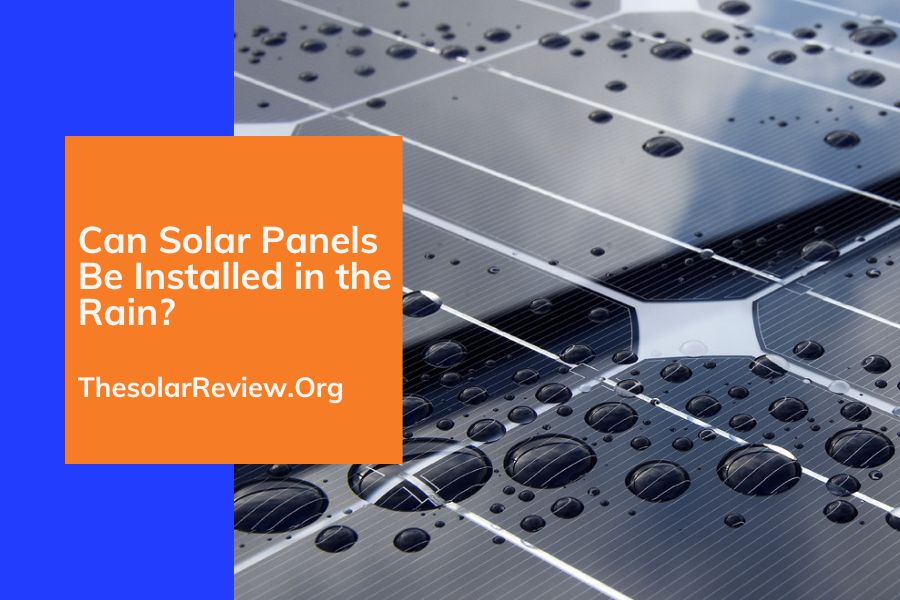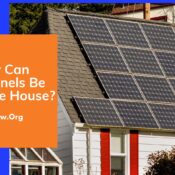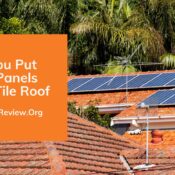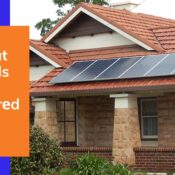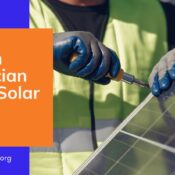Photovoltaic panels have transformed how we connect solar energy, providing a clean and maintainable energy source. As potential photovoltaic panel owners consider their financial investment, a burning concern frequently arises: Can Solar Panels Be Installed in the Rain?
This blog post will discuss whether solar panels can be installed in the Rain. We will check out the essential functions of solar panels, their durability versus the components, and the crucial factors to consider when it concerns installation.
Whether you’re a homeowner planning a change to solar power or simply interested in the scientific research behind these photovoltaic wonders, this article aims to provide you with a thorough guide.
From industry requirements to real-world success stories, we’ll resolve the crucial elements determining whether solar panels can be Installed in the Rain.
By the end, you’ll have a clear answer to the inquiry and a deeper understanding of the elements that make photovoltaic panels a reputable and lasting power remedy, Rain or shine.
So, let’s dive in and uncover the reality: Can Solar Panels Be Installed in the Rainfall?
Can Solar Panels Be Installed in the Rain?
Indeed, photovoltaic panels can be installed in the Rain, and they’re certainly made to be water-resistant. Some specific reasons and elements add to their capability to withstand stormy conditions and stay functional. Let’s explore why photovoltaic panels are rainproof and the key features that make them water-resistant.
1. Encapsulation
Solar panels are created with a high degree of encapsulation. This suggests that the delicate photovoltaic cells and inner electronic devices are snugly sealed within layers of materials, often consisting of tempered glass and specialized encapsulants. This encapsulation produces a safety barrier, making it exceptionally challenging for water to permeate the panel’s inside.
2. Weather-Resistant Materials
The materials utilized in photovoltaic panels, especially the external layer of tempered glass and the frame, are picked for their weather-resistant properties. These products can endure direct exposure to Rainfall, snow, hail storms, and UV radiation without wearing away.
3. Watertight Sealing
Specialist solar panel installments emphasize watertight sealing. The links between panels, circuitry, and junction boxes are sealed carefully to prevent dampness from infiltrating the system. The seals and gaskets used these links to preserve their stability in wet conditions.
4. Rigorous Testing
Extensive Testing Photovoltaic panels undertake rigorous testing throughout manufacturing to ensure their waterproof attributes. They are subjected to numerous weather conditions, including heavy Rainfall, to confirm their capability to endure dampness without performance degradation. Panels that satisfy worldwide standards are taken into consideration as rainproof.
5. Proper Installation
Professional installation is critical for making sure that photovoltaic panels are indeed waterproof. Knowledgeable installers knows about roof types and use suitable placing and racking systems to safeguard the panels, which, when done appropriately, additionally protect against water breaches.
6. Drainage and Angle
The tilt and alignment of solar panels play a role in losing rainwater. Solar panels are generally installed at a mild angle to encourage water drainage. This lessens the chances of water merging on the surface, possibly raising concerns over time.
7. Regional Considerations
The Performance of photovoltaic panels in rainy conditions can differ depending on the environment and local rain patterns. In areas with frequent hefty Rainfall, the overall performance of solar panels may vary from regions with even more arid climates. It is essential to note that photovoltaic panels continue to run successfully in several areas with significant Rainfall.
Solar panels are created with multiple layers of defense and products, making them very immune to water. Leak-proof sealing, encapsulation, and rigorous testing ensure they remain waterproof. When mounted expertly and preserved appropriately, photovoltaic panels can withstand Rain and Raininue to create clean and renewable energy effectively, making them a reliable power source in various weather conditions.
Encapsulation And Water-Resistant Materials
Indeed, solar panels are made using various encapsulation and water-resistant materials to ensure their durability and waterproof properties:
1. Encapsulation Materials

EVA is generally used in the encapsulation procedure of solar panels. It is a transparent, thermoplastic material that positions the photovoltaic cells and offers a safety layer. EVA is recognized for its ability to comply with the glass and cell surfaces while keeping transparency to permit sunlight.
2. Backsheets
The back sheet is the lowest layer of a sun panel and is usually made from a mix of products consisting of fluoropolymer and Tedlar (polyvinyl fluoride). These products offer a barrier to protect against dampness and ecological elements.
2. Glass
Solar panels have a top layer of toughened-up glass, which serves as a safety guard. This glass is dealt with to be transparent and highly immune to effects, weather conditions, and wetness. It serves as a barrier against rainwater.
3. Frames
The lightweight aluminium or other steel structures bordering the solar panels are additionally dealt with to compensate for deterioration and rust. These structures add an extra layer of security against ecological aspects, consisting of Rain.
4. SealantsRain Adhesives
The junction boxes and connections between photovoltaic panels use silicone and other specialized sealers and adhesives. These materials develop a watertight seal, avoiding dampness from entering the electrical elements.
5. Testing and Standards
Photovoltaic panels are subjected to strenuous screening during manufacturing, including damp heat and humidity examinations.
These examinations are designed to ensure that the encapsulation and products used in solar panels can hold up against long-term direct exposure to wetness without destruction. The mix of these products and encapsulation methods develops a robust and waterproof framework for solar panels.
This design ensures they can execute effectively, even in wet conditions. Correct installation and maintenance are essential to ensure their long-lasting Performance and durability.
Maintenance Tips And Strategies To Protect Your Solar Panels In Rainy Weather
Maintaining and protecting your solar panels during rainy days is crucial to ensure their long-term Performance and efficiency. Here are some upkeep suggestions and approaches to secure your photovoltaic panels in wet climates.
1. Regular Cleaning
Rainfall can aid in keeping your photovoltaic panels tidy, but routine cleansing is still required, particularly in areas with rare or light Rainfall. Dust, pollen, bird droppings, and other debris can gather on the panel’s surface area and lower Performance.
2. Expert Examination
Set up periodic specialist inspections to check the overall condition of your photovoltaic panels. Experienced technicians can identify any possible issues, such as loosened connections or meeting damage.
3. Examine Seals and Gaskets
Ensure that the seals and gaskets in the junction boxes and connections between panels stay intact. These are critical parts for maintaining the waterproofing of the system.
4. Maintain Trees and Branches Trimmed
If you have trees near your photovoltaic panels, regularly trim branches to avoid fallen leaves, sap, or bird nests from obstructing sunlight or falling onto the boards. Falling branches can likewise trigger physical damage.
5. Monitor Performance
Make use of a surveillance system to keep an eye on your solar panel’s Performance. If you notice a substantial decrease in Performance, it may show an issue that requires focus.
6. Maintain a Proper Tilt
Guarantee that your solar panels are mounted at a suitable angle. This can aid water drainage more effectively and decrease pooling during heavy Rain.
7. Check RainDamages After Storms
After extreme storms or heavy rainfalls, aesthetically evaluate your solar panels for any indicators of physical damage. Look for cracks in the glass or framework and loosened components.
8. Keep Premises Clean
Preserve the area around your photovoltaic panels, freeing it from debris, dust, and greenery. This can help reduce the danger of dirt splashing onto the panels during heavy Rain.
9. SecuritRainainst Hail storm
If you stay in a location prone to hailstorms, consider investing in solar panels with hail-resistant materials or mounting protective displays to protect your boards from damage.
10. Routinely Inspect Circuitry –
Ensure that the electrical circuitry and links remain in good condition. Water damage can take place if the circuitry is revealed to be damp.
11. Battery Maintenance
If you have a solar battery storage space system, examine the batteries frequently to guarantee they function appropriately—guarantee they are safeguarded from Rainfall and wet problems.
12. Look For Specialist Aid
If you experience any problem or unpredictability relating to the maintenance of your solar panels throughout rainy days, do not think twice about seeking expert aid. A professional solar panel specialist can supply guidance and carry out required repairs.
By adhering to these maintenance ideas and taking proactive steps, you can protect your photovoltaic panels throughout stormy climates and guarantee they remain to efficiently create tidy, renewable energy.
When selecting the best roof tiles, consider concrete tile roofs. Concrete tiles are durable, fire-resistant, and come in various styles to complement any architectural design. Installing tiles in an east-west direction allows for optimal sunlight exposure.
Conclusion: Can Solar Panels Be Installed in the Rain
In short, solar panels can be installed in the Rain because they are designed with solid waterproof features. Packability, weather-resistant materials, waterproofing, rigorous testing, proper installation and strategic considerations ensure their durability in wet conditions.
Specific materials such as EVA, backing panels, glass, frames, sealants, and adhesives create a waterproof structure. Additionally, this article provides essential maintenance tips to ensure long-term performance in wet weather.
By understanding the science behind solar panels and implementing proper installation and maintenance practices, homeowners can be confident that solar panels remain a reliable source of clean, renewable energy—trust, Rain or shine, maRaint beautiful.
FAQs
1. Does Solar Panel Work in Rainy Periods?
Yes, photovoltaic panels can still function throughout the rainy period. While their efficiency may decrease slightly due to reduced sunlight and Rainfall obstructing some sunshine, solar panels are developed to create electricity on cloudy or rainy days.
They remain to harness diffused and spread sunshine to generate electrical energy. While their output may be reduced compared to warm days, they can still contribute to your general energy needs.
2. Are Solar Panels Waterproof?
Photovoltaic panels are made to be waterproof. They are made with encapsulation materials, such as EVA (Ethylene Plastic Acetate), and protective layers of toughened-up glass that develop a leak-proof seal.
Proper installation and maintenance are essential in ensuring the panels stay waterproof. The junction boxes and links between panels are sealed to stop dampness from entering the electric components.
3. Does Water Damage Solar Panels?
Water, under normal conditions, does not harm photovoltaic panels. As stated earlier, solar panels are constructed to endure direct exposure to wetness.
Nevertheless, if there is a breakdown or damage to the panel’s seals, circuitry, or junction boxes, water could damage the system. This is why specialist installments and regular maintenance are essential to ensure the ongoing waterproofing of the panels and to deal with any concerns without delay. In areas with heavy Rainfall, the tilt and angle of the panels likewise aid in shedding Rain and lessen the risk of damage.

